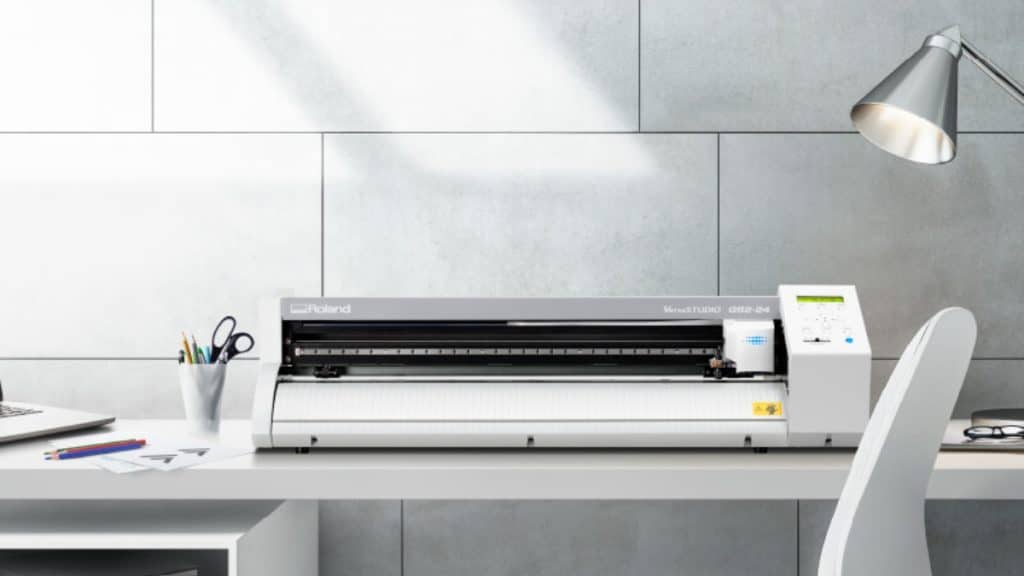Vinyl stickers have gained popularity over the years for their versatility and ability to bring a custom touch to any surface. An essential tool for crafting vinyl decals is a desktop cutting machine, which simplifies the process of cutting designs. In this beginner’s manual, we will delve into vinyl stickers and equip you with the knowledge required to produce designs using a desktop cutter.
Understanding Vinyl Stickers
Vinyl stickers are decals crafted from vinyl material that you can affix to diverse surfaces like walls, windows, vehicles, laptops, and more. They are utilized for promotional purposes and have captured the interest of individuals and businesses alike. Vinyl decals offer a platform for self-expression while also acting as a marketing instrument.
Selecting the Appropriate Desktop Cutter
When choosing desktop vinyl cutters for sale for crafting vinyl decals, several factors come into play. Firstly, consider the size of the machine. Ensure you pick a cutter that aligns with your project requirements. If you intend to cut designs or handle materials, opt for a cutter with a broader cutting width. The precision of the cutter is another factor to contemplate. Ensure to look for features, like registration mark sensing systems that use optics or automatic adjustments for cuts every time. Also, check if the machine is compatible with software that imports file formats typically used in design programs like SVG or AI.
Preparing Your Design
It’s essential to prepare your design before you start cutting it. Begin by choosing top-notch vector-based software that allows easy creation or import of designs. Ensure all elements in your design are well grouped and organized before exporting it as an SVG file format compatible with cutters. Then, adjust the size of your design accordingly based on where you plan to place it on your desired surface. Consider the limitations of the vinyl material thickness and cutter size capabilities. Tweaking the scale of your design can help ensure a fit within your chosen parameters.
Vinyl Material and Transfer Tape
Vinyl enthusiasts often discuss which type of vinyl material yields the best results. The two main types are matte vinyl and glossy vinyl. Glossy vinyl provides a shiny finish and vibrant colors, making it an excellent choice for attention-grabbing designs. Conversely, matte vinyl offers a dull finish that doesn’t reflect light, making it ideal for spaces or when a more subtle look is preferred. When you’re ready to apply your cut design onto the surface you want, make sure to have transfer tape on hand. This tape serves as a carrier that keeps all the pieces of your design together as you peel them off their backing and place them on the surface. Choose transfer tapes with medium to tack based on your design’s details.
Cutting Settings and Test Cuts
With all your materials set up, it’s time to start cutting! Before you proceed with your design, do some test cuts using vinyl scraps to adjust your cutting settings perfectly. Modify factors like speed and pressure based on the thickness and type of vinyl you’re working with. Starting with lower settings and gradually increasing them will help avoid errors that could lead to wasted time or materials. Note the settings that work well if you plan to create similar designs later.
Weeding Your Vinyl Decal
Once you’ve successfully cut out your design, it’s time to weed out the vinyl around it. Weeding involves removing all the bits from the vinyl sheet. It’s vital to be meticulous and pay attention to detail to avoid unintentionally omitting any components from your design to achieve quality results when applying vinyl. Consider investing in tools, like tweezers or hooks, that can assist in the removal process.
Closing Thoughts
Crafting vinyl decals may necessitate practice and experimentation; however, armed with a desktop cutter and some creativity, you can unleash possibilities for personalized designs. Remember to select a cutter, meticulously prepare your design, choose vinyl material and transfer tape, fine-tune your cutting settings through trial runs, and apply your decals attentively using correct alignment techniques. By following these suggestions, you’ll be well-equipped to amaze others with your captivating vinyl creations!
